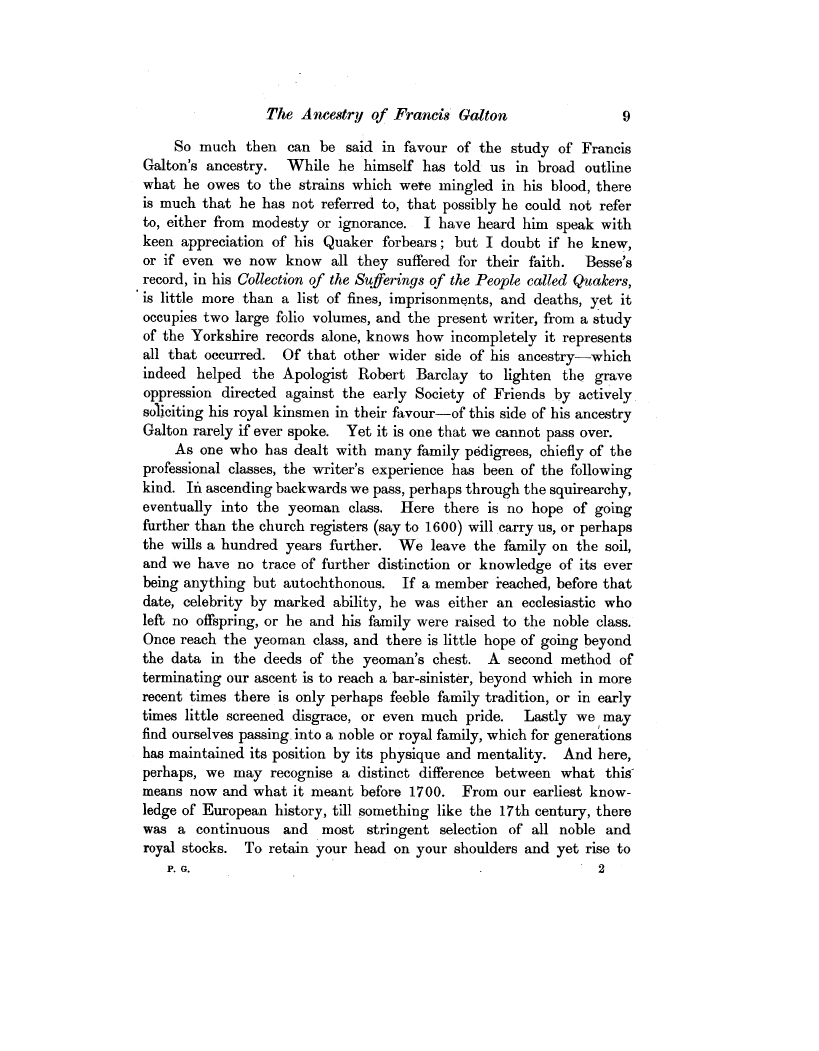The Ancestry of Francis Galton 9
So much then can be said in favour of the study of Francis Galton's ancestry. While he himself has told us in broad outline what he owes to the strains which were mingled in his blood, there is much that he has not referred to, that possibly he could not refer to, either from modesty or ignorance. I have heard him speak with keen appreciation of his Quaker forbears ; but I doubt if he knew, or if even we now know all they suffered for their faith. Besse's record, in his Collection of the Sufferings of the People called Quakers, is little more than a list of fines, imprisonments, and deaths, yet it occupies two large folio volumes, and the present writer, from a study of the Yorkshire records alone, knows how incompletely it represents all that occurred. Of that other wider side of his ancestry-which indeed helped the Apologist Robert Barclay to lighten the grave oppression directed against the early Society of Friends by actively soliciting his royal kinsmen in their favour-of this side of his ancestry Galton rarely if ever spoke. Yet it is one that we cannot pass over.
As one who has dealt with many family pedigrees, chiefly of the professional classes, the writer's experience has been of the following kind. In ascending backwards we pass, perhaps through the squirearchy, eventually into the yeoman class. Here there is no hope of going further than the church registers (say to 1600) will carry us, or perhaps the wills a hundred years further. We leave the family on the soil, and we have no trace of further distinction or knowledge of its ever being anything but autochthonous. If a member reached, before that date, celebrity by marked ability, he was either an ecclesiastic who left no offspring, or he and his family were raised to the noble class. Once reach the yeoman class, and there is little hope of going beyond the data in the deeds of the yeoman's chest. A second method of terminating our ascent is to reach a bar-sinister, beyond which in more recent times there is only perhaps feeble family tradition, or in early times little screened disgrace, or even much pride. Lastly we may find ourselves passing_ into a noble or royal family, which for generations has maintained its position by its physique and mentality. And here, perhaps, we may recognise a distinct difference between what this means now and what it meant before 1700. From our earliest knowledge of European history, till something like the 17th century, there was a continuous and most stringent selection of all noble and royal stocks. To retain your head on your shoulders and yet rise to
P. G. 2
